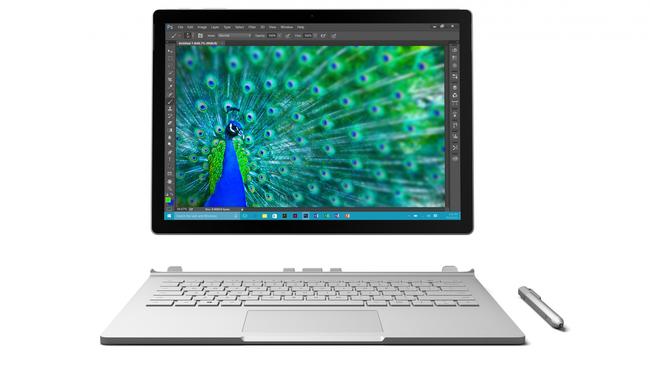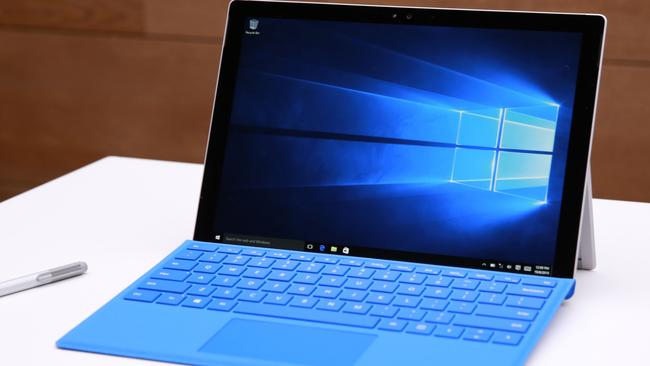Microsoft wants you to love laptops again, launches Surface Book in Australian flagship store
AFTER three years talking down the laptop computer, Microsoft has created its own. But the Surface Book, out tomorrow, is not a typical computer.

MICROSOFT has spent the past three years convincing people they do not need a laptop computer.
This year, the company made one of its own and it wants you to buy one when it launches tomorrow.
TOP FIVE: The best hybrid computers that flip, twist and spin
CURVEBALL: Microsoft’s entry-level Surface undercuts the competition
But Microsoft Surface marketing manager Markus Weickenmeier says the laptop, dubbed the Surface Book, is far from a traditional computer and does not compromise Microsoft’s message.
Furthermore, the company will launch it (in its flagship Sydney store) alongside a new tablet hybrid that “doubles down” on computing power and its mobile computing message.

The Redmond-based company is not shy about who it’s targeting with the new Surface duo either, with plenty of references to its old nemesis Apple when comparing the new touchscreen devices to those already on the market.
Microsoft surprised the computing world when it unveiled new Surface products in New York last month, having avoided making a laptop throughout its history.
Weickenmeier admits “people have been asking us for quite some time ‘why don’t you guys make a laptop-laptop?’” but says the company had not seen a reason to do so until now.
Despite its laptop label, the Book has plenty in common with other devices in the Surface family.
Its 13.5-inch (33cm) screen detaches from the keyboard so it can be used as a tablet, or turned around, reattached, and used as a digital canvas.
There’s also more going on inside the $2299 Surface Book than the average hybrid computer, with an optional discreet graphics processing unit hidden in the keyboard to boost its performance, and a screen held firmly in place with an electric current broken only when the user pushes an eject key.

Despite the advanced technology, including a striking “dynamic fulcrum hinge,” Weickenmeier admits users will employ the Book as a traditional computer most of the time.
“Eighty per cent of the time you’re going to use this as a laptop,” he says.
“You’re going to use this as a laptop because you’re drawn to this device over Surface Pro 4 because of the firm base and the larger screen real estate.
“But there are moments you’ll want to detach the screen to use it in an unexpected way.”
The Surface Book will launch tomorrow alongside the Surface Pro 4 — the fourth high-performance tablet from Microsoft in three years.
The new $1349 Surface Pro features the same footprint as last time but it is thinner, lighter, offers an upgraded 12.3-inch (31.2cm) screen, and can be sped up with an Intel Core i7 processor and 16GB RAM.
Its Type Cover keyboard has also been redesigned, with more generous spacing, and its Pen offers new shortcuts and clings to its side magnetically.

Weickenmeier says the redesigned accessories and laptop-level power are key to convincing users to ditch traditional computers and tablets, and adopting a hybrid instead; Apple MacBook users in particular.
“When you compare Surface Pro 4 to Surface Pro 3, Surface Pro 4 is 30 per cent faster,” he says.
“When you compare Surface Pro 4 and a MacBook Air, we are 50 per cent faster. People have loved Surface Pro 3 for its power. They’re going to be blown away by Surface Pro 4.”
Microsoft’s upwardly mobile competitors, Apple and Samsung, may try to steal a little of the Surface’s thunder, however, with Apple poised to release its 12.9-inch (32.7cm) iPad Pro, and Samsung launching its 18.4-inch (46.7cm) Galaxy View in the US this month.




